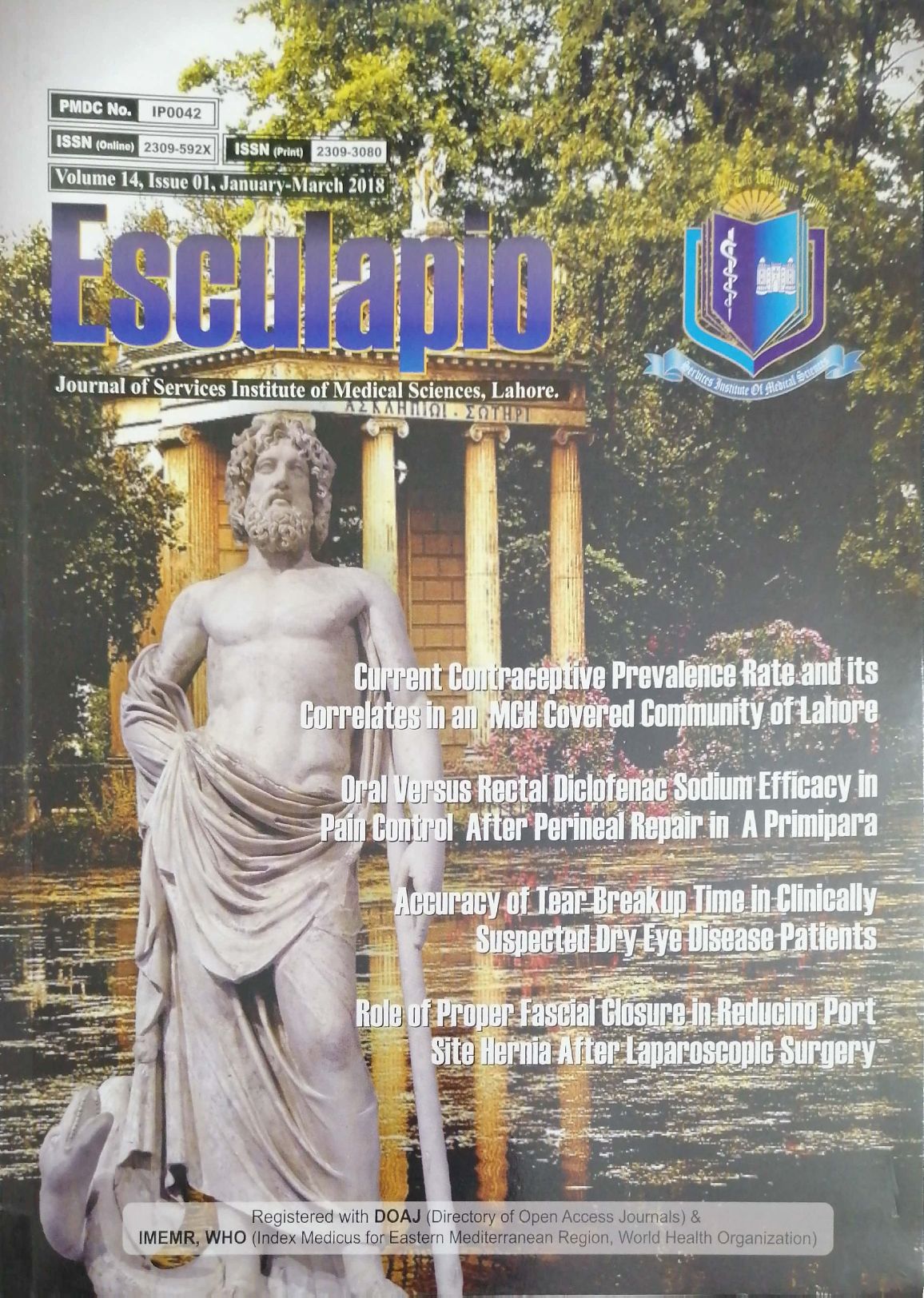Current Contraceptive Prevalence Rate And Its Correlates In An MCH Covered Community Of Lahore
DOI:
https://doi.org/10.51273/esc18.71411Keywords:
family planning, population welfare, contraception, CPR, mCPR, contraceptive methods.Abstract
Objective: To determine the current Contraceptive Prevalence Rate (CPR) and its correlates among married women of childbearing age in an MCH covered community of Lahore city, Pakistan.
Methods: This cross sectional study was conducted during October to December 2017 in thecatchment area of the MCH centers of Institute of Public Health Lahore. Out of 450 married women of childbearing age, 200 women were included, using simple random sampling technique. Data was collected by interviewing participants using a pre tested questionnaire. SPSS version 24.0 was used for analysis that included descriptive statistics and application of Chi Square test.
Results: The calculated CPR in study population was 41% whereas mCPR was 36%. Use of condoms was the most common contraceptive method. Age of wife, age of husband, number of children, knowledge about family planning, living sons, family planning counseling and discussion about family planning between spouses were significantly associated with contraceptive use. Reasons of not using contraceptives included fear of side effects, previous history of side effects, disapproval from husband, lack of information, disapproval from mother in law, infrequent sexual activity, history of latex allergy in either partner and breast feeding.
Conclusions: The current CPR is way below the expected target value of 50% for Pakistan suggesting that the efforts in terms of health education and behavior change communication need to be stressed. There is a scope to improve health education system, plan a structured counseling for family planning, decrease obstacles and address current issues to meet contraception needs.










